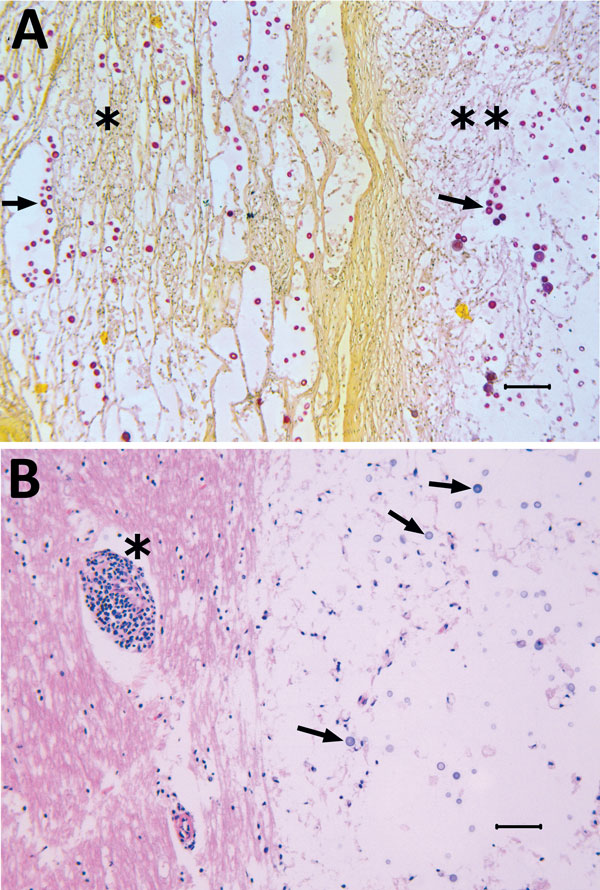Volume 22, Number 6—June 2016
Letter
Cryptococcus gattii VGIIb-like Variant in White-Tailed Deer, Nova Scotia, Canada
Figure

Figure. Tissue from white-tailed deer (Odocoileus virginianus), showing microscopic lesions caused by a unique Cryptococcus gattii VGIIb-like variant strain most similar to that of the VGIIb genotype; etiology was confirmed by molecular sequencing. A) Photomicrograph of lung lesions with intralesional C. gattii (arrows indicate examples of individual yeast) in a mass (**) and in adjacent compressed alveolar spaces (*). Mucicarmine stain. Scale bar indicates 100μm. B) Photomicrograph of a brainstem lesion with intralesional C. gattii (arrows indicate examples of individual yeast) and an adjacent blood vessel with a perivascular infiltrate of inflammatory cells (*). Hematoxylin and eosin stain. Scale bar indicates 50μm.
1These authors contributed equally to this article.